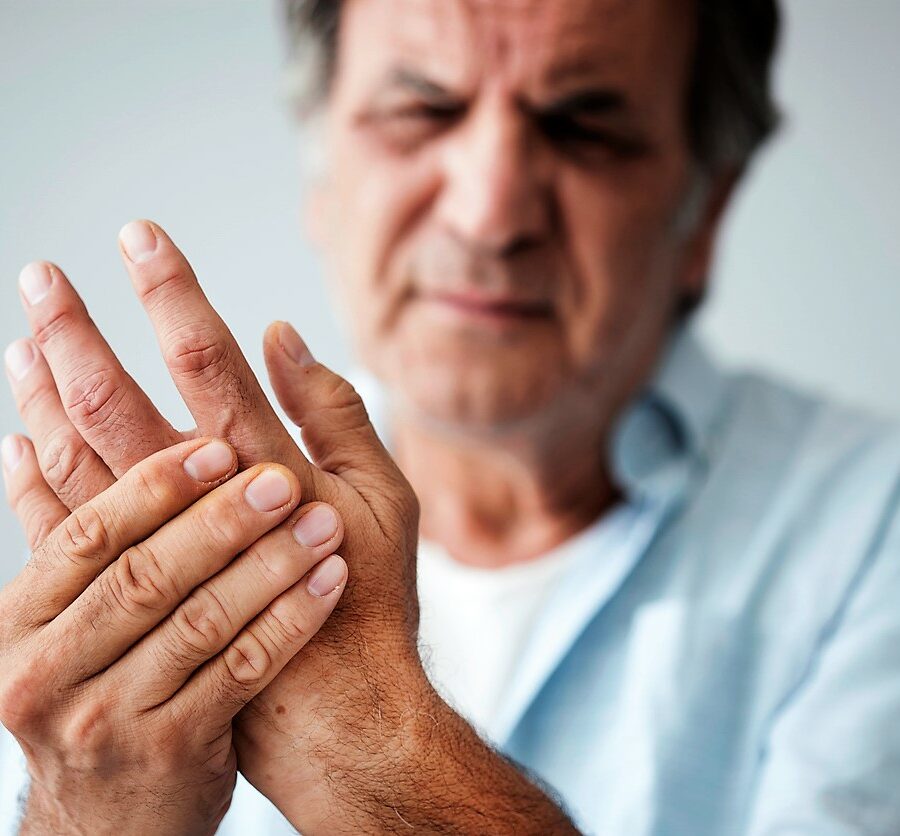For people living with arthritis, the winter months can often be the toughest time of the year. Symptoms of arthritis, which include chronic pain, tenderness, stiffness, redness, and swelling of the joints, are unpleasant during any season. But, the symptoms worsen when the temperature drops to near or below 32 degrees Fahrenheit. However, there are ways to lessen your symptoms. Follow the tips below to manage arthritis during the winter months.
Types of Arthritis
- Rheumatoid arthritis– This version of arthritis occurs when the immune system starts to attack and kill its own cells. Inflammation of the synovium — a tissue present between the joints providing flexibility — is one of the primary symptoms of this disease, which eventually causes erosion of bones.
- Osteoarthritis –Osteoarthritis, which primarily affects the joints in the limbs, is caused by the degeneration of cartilage and synovial fluid present between the bones that comprise a joint. The bones swell up, causing the individual to feel pain during movement.
- Gout – A type of arthritis that develops when crystals of uric acid are deposited between the joints. Gout may spread from one joint to other parts of the body. It can be extremely painful.
- Psoriatic arthritis– This type of arthritis can occur in those who suffer from psoriasis, a skin disease in which dry, scaly, red patches on the skin form due to an overactive immune system.
Ways to Manage Arthritis During the Winter
Although many seniors take medication for arthritic pain, there are other ways to manage arthritis in the winter months. Many pain medications have side effects that can be avoided by integrating physical activity and therapy into a daily routine. To control your arthritis symptoms this winter, try the following methods:
- Wear warmer clothes. – The best thing you can do to keep the arthritis symptoms in check is to stay warm. Gloves, scarves, socks, jackets and other winter clothes should be worn when you go outside or even indoors, depending on the temperature in the room. Keeping your extremities covered prevents the loss of body heat. Using hot water bottles and electric blankets can also help avoid the aches and pains of arthritis.
- Exercise. – Even light exercise can help prevent your body from becoming stiff. Simple indoor activities such as stretching and walking can do wonders for seniors with arthritis. Braces and supports can be important for joint support during exercise. Some seniors may find them useful in controlling arthritis pain even when they’re away from the gym.
- Maintain a balanced diet. – A healthy diet is important for treating arthritis. Take proper doses of Vitamin D and Calcium to regenerate the bone and cartilage. Monitoring for a healthy weight can keep joints from being overburdened by extra pounds. Also, drink plenty of water. Proper hydration helps prevent irritation and inflammation within the body. Ask your doctor if a glucosamine-chondroitin supplement or a fish oil supplement with omega-3 fatty acids could offer some relief from joint aches and pains.
- Enjoy warm water. – A warm bath or a dip in a heated pool can sometimes help soothe aching joints. But, if you take an indoor swim, be sure to dry off completely before you head outside into cold weather. If you take a hot bath or shower, wait a few minutes before venturing outside. Going from extremely hot to extremely cold temperatures could shock your system and affect your arthritis.
- Consider alternative therapies. – Techniques like acupuncture and massage therapy have helped arthritis sufferers find relief. For example, an hour-long massage once a week for eight weeks can help loosen muscles and decrease strain on joints.
Staying On Top of Arthritis Pain
Seniors should stay in contact with their physician to monitor their arthritis, so the pain and damage the disease can cause doesn’t get out of control. Fortunately, new medications and treatments are in development, and physical therapy and massage treatments can increase flexibility and reduce pain without having to resort to medication. In many cases, the treatments may be covered by health insurance, depending on your plan and provider.
There are a lot of ways that arthritis pain can be managed. You just have to be smart in taking care of your joints, and make exercise and activity a priority to minimize your pain and optimize your health.
Bethesda cares about helping seniors to live healthy and happy lives. Read more Senior Health & Wellness tips from Bethesda on our blog!
Want to find out more?
If you’d like to stay up to date with Bethesda Health Group, sign up here to receive our blog and newsletters!
"*" indicates required fields
Related Articles
Want to find out more?
If you’d like to stay up to date with Bethesda Health Group, sign up here to receive our blog and newsletters!
"*" indicates required fields



